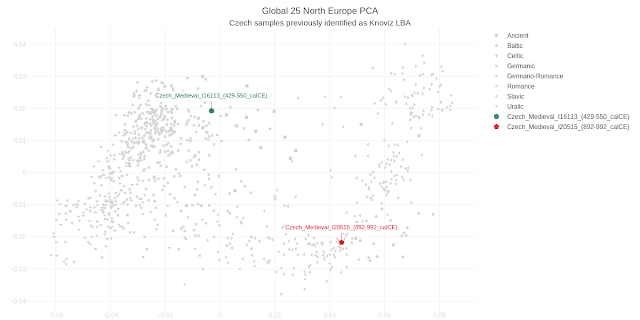EAA 2021 abstracts
https://www.e-a-a.org/EAA2021/Programme.aspx?Program=3
Title:
Main authors:
Anna Szecsenyi-Nagy Content:
Fine-scale
ancient DNA analyses provide not only insights to prehistoric
demographic processes, but also a deeper understanding of the studied
communities’ structure and organization. Here we present intensively
sampled Early Bronze Age graveyards (assigned to the Nitra and Únětice
cultures) from the north-west part of the Carpathian Basin, and compare
the new genomic data with anthropological and archaeological records and
theories. Several families are reconstructed based on the genome-wide
capture data, and attempts on reconstructing distant relatedness is also
presented. A comprehensive analyses of the paternal and maternal
lineages, together with the autosomal DNA results enable to reformulate
the current knowledge about the social system of the Nitra (Nitrianska)
culture’s population, that culture was disseminated in present-day
southwest Slovakia and southern Moravia. The Nitra culture followed
epi-Corded Ware traditions in many ways, and most of the burials showed
emphasis on highlighting the gender and social status of the buried
individuals. The homogeneity of the male lineages of the Nitra culture’s
population, the detected distinct ancestry components and the
comparison of the male and female admixture signals all contribute to a
new way of understanding of the social changes at the dawn of the Bronze
Age in East-Central Europe.
Title:
Main authors:
Roman Shiroukhov Content:
The
Late Viking Age cemetery Ostriv was discovered by an Institute of
Archaeology of the National Academy of Science of Ukraine (IA NASU) team
in 2017, approximately 100 km from Kyiv in the Porossya region. To
date, 82 inhumation graves have been excavated in an area of 1500 m2.
Most of the artefacts from Ostriv are uncommon in Ukraine, but are
frequently found in the East Baltic region.
The pilot project “Baltic migrants in Kievan Rus’” is implemented by IA NASU and ZBSA together with CAU laboratories and anthropologists from Latvia and Lithuania in 2019-2020. The work started at the point of analysis of morphological features of Ostriv and East Baltic archaeological artefacts and burial rite. Complex AMS 14C-dating, stable isotopes, aDNA and non-destructive metal analysis was provided in frames of the pilot-study.
Ostriv cemetery combines the local Kievan Rus‘ and East Baltic region funerary and typo-chronological features. According to the AMS 14C datind two phases can be distinguished: phase 1 (980-1020 AD) correspond to the first wave of migrants and associated with time of reign of Vladimir; phase 2 of (1010-1040 AD) correspond to the short time of Svyatopolk and Yaroslav the Wise rivalry and the long reign of Yaroslav.
Skeletal remains anthropological research demonstrate the Ostriv population as rather young with a low adaptation level. The similarity of the AMS 14C dating results together with δ15N and δ13C isotopes ratios and the typo-chronological background of Ostriv and East Baltic individuals may indicate the synchronous origin of both two populations sites and their similar diets. The first results of the genetic analysis show the external origin of the Ostriv individuals, placing them closer to the Baltics and Scandinavia. At the preliminary level of research, the people of Ostriv are considered as East Baltic region incomers.
The pilot project “Baltic migrants in Kievan Rus’” is implemented by IA NASU and ZBSA together with CAU laboratories and anthropologists from Latvia and Lithuania in 2019-2020. The work started at the point of analysis of morphological features of Ostriv and East Baltic archaeological artefacts and burial rite. Complex AMS 14C-dating, stable isotopes, aDNA and non-destructive metal analysis was provided in frames of the pilot-study.
Ostriv cemetery combines the local Kievan Rus‘ and East Baltic region funerary and typo-chronological features. According to the AMS 14C datind two phases can be distinguished: phase 1 (980-1020 AD) correspond to the first wave of migrants and associated with time of reign of Vladimir; phase 2 of (1010-1040 AD) correspond to the short time of Svyatopolk and Yaroslav the Wise rivalry and the long reign of Yaroslav.
Skeletal remains anthropological research demonstrate the Ostriv population as rather young with a low adaptation level. The similarity of the AMS 14C dating results together with δ15N and δ13C isotopes ratios and the typo-chronological background of Ostriv and East Baltic individuals may indicate the synchronous origin of both two populations sites and their similar diets. The first results of the genetic analysis show the external origin of the Ostriv individuals, placing them closer to the Baltics and Scandinavia. At the preliminary level of research, the people of Ostriv are considered as East Baltic region incomers.



Comments